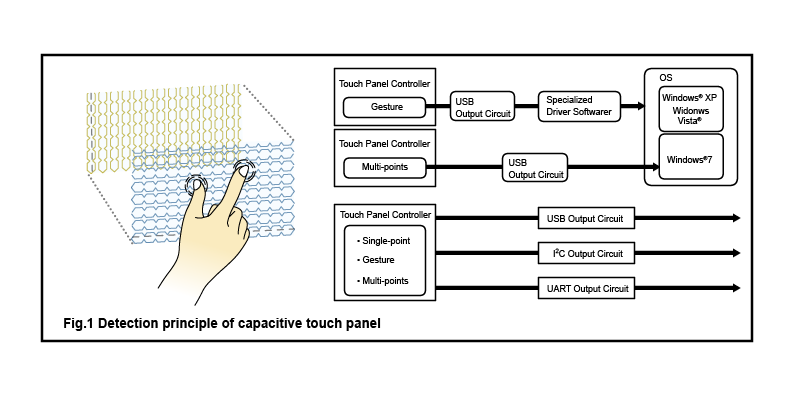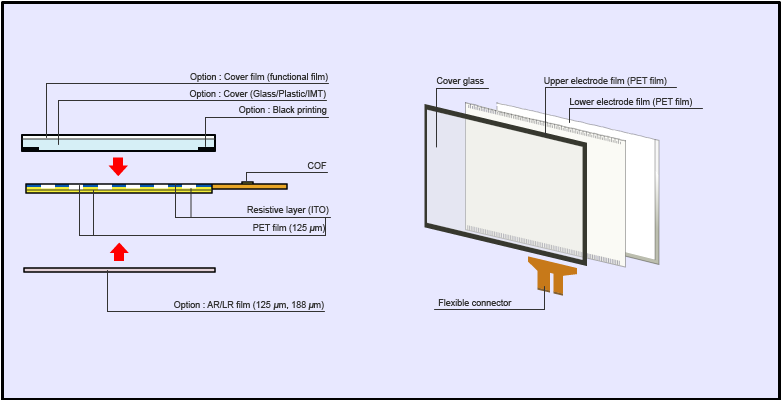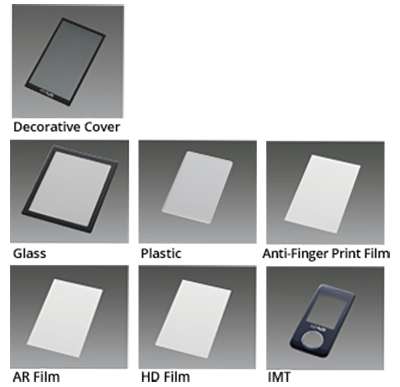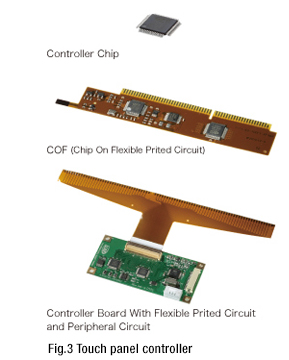PCAP
Projected Capacitive Touch Panels feature a multi-input interface. Referred to as “PCAP”, GUNZE designs and sells variety of customized products using PCAP technologies.

Capacitive touch panel is a type of touch panel which captures minor electrical alteration of finger input. It consists of transparent electrode films which electrodes are patterned vertically & horizontally and detect input location by identifying where electrical alternation occur using IC (touch panel controller). (Fig.1)
Adjustment of input position to be detected just by bringing finger close to the surface of sensor without actually finger directly touching the sensor is possible, and this enables using materials such as glass as cover material which is placed on the input surface side making designable touch panel having durability against scratch with better environmental resistance.
NOTE: In electromagnetism and electronics, “capacitance” is the ability of a body to hold an electrical charge. Capacitance is also a measure of the amount of electrical energy stored (or separated) for a given electric potential. The SI unit of capacitance is the farad; 1 farad is 1 coulomb per volt.
Unlike other touch panel method, performance of capacitive touch panel relies upon its controller. Thus, it is necessary to consider touch panel and IC in sets.
In terms of configuration of capacitive touch panels, it is the same as the matrix type in which electrodes are patterned with horizontal rows and vertical columns in a reticular pattern.
There are 2 different electrode patterns for the sensor where grid patterns are linear and diamond. Appropriate capacitance of insulator (dielectric substance) is obtained when voltage is applied to electrode patterns which lie next to each other and potential difference occurs between the electrodes.
Since the human body contains high water content and has electrical conductivity, capacitance between electrodes increases when a finger comes near the sensor detecting input coordinates by identifying capacitance where horizontal (x) and vertical (y) lines change. (Fig.1)

Typical materials used in designing capacitive touch panels are glass and film. GUNZE has developed film-based projected capacitive touch panels taking advantage of in-house film material development. Film-based projected capacitive touch panels may be offered with the advantages of thinness, light weight, low price, and ease of bonding when compared to glass-based projected capacitive touch panels. (Fig.2)

COF stands for “Chip On Flexible Printed Circuit” and is a mounting technology where an IC chip is mounted directly on top of a Flexible Printed Circuit. This technology has the advantage of making the IC mounting area smaller, and reducing the size of Flexible Printed Circuit’s connection. (Fig.3)
Film-based capacitive touch panels are available using a wide variety of cover lens materials. Cover lens materials include the following: glass, acrylic, and functional film (anti-finger print film, AR film, and HD (High Durability 6H-9H)) film.

ICs (Touch Panel Controllers) used with GUNZE capacitive touch panels are available in the forms of chip only, COF (Chip On Flexible Printed Circuit) where chip is mounted onto Flexible Printed Circuit, and controller board with peripheral circuit. Please select one from these 3 configurations which best suits your product.

